Explain how does (i) photoelectric current and (ii) kinetic energy of the photoelectrons emitted in a photocell vary if the frequency of incident radiation is doubled, but keeping the intensity same? Show the graphical variation in the above two cases.
To explain how the photoelectric current and the kinetic energy of photoelectrons vary when the frequency of incident radiation is doubled while keeping the intensity constant, we can break this down into two parts:
Part (i): Variation of Photoelectric Current
1. Understanding Intensity and Photoelectric Current:
- The intensity of the incident radiation is defined as the energy per unit area per unit time. It is directly proportional to the number of photons striking the surface per unit time.
- The photoelectric current is directly proportional to the number of photoelectrons emitted from the surface.
2. Doubling the Frequency:
- When the frequency of the incident radiation is doubled, the energy of each photon also doubles (since energy E is given by E=h⋅f, where h is Planck's constant and f is the frequency).
- However, since the intensity is kept constant, the total number of photons (and thus the number of emitted electrons) remains unchanged.
3. Conclusion for Photoelectric Current:
- Since the number of photons is constant, the number of emitted photoelectrons remains constant. Therefore, the photoelectric current remains constant.
Part (ii): Variation of Kinetic Energy of Photoelectrons
1. Understanding Kinetic Energy:
- The kinetic energy of the emitted photoelectrons can be expressed using the photoelectric equation:
KEmax=E−ϕ
where KEmax is the maximum kinetic energy of the emitted electrons, E is the energy of the incident photons, and ϕ is the work function of the metal.
2. Doubling the Frequency:
- When the frequency is doubled, the energy of each photon becomes E′=h⋅(2f)=2E.
- The new kinetic energy of the emitted electrons becomes:
KE′max=2E−ϕ
- Therefore, the kinetic energy of the emitted photoelectrons increases as the frequency increases.
3. Conclusion for Kinetic Energy:
- As the frequency of the incident radiation is doubled, the kinetic energy of the emitted photoelectrons also increases.
Graphical Representation
1. Graph for Photoelectric Current:
- On the x-axis, plot the frequency of the incident radiation.
- On the y-axis, plot the photoelectric current.
- The graph will be a horizontal line indicating that the current remains constant as the frequency increases.
2. Graph for Kinetic Energy:
- On the x-axis, plot the frequency of the incident radiation.
- On the y-axis, plot the kinetic energy of the emitted photoelectrons.
- The graph will be a straight line with a positive slope, starting from the threshold frequency (μ0) and increasing as the frequency increases.
Summary
- Photoelectric Current: Remains constant when frequency is doubled (intensity constant).
- Kinetic Energy of Photoelectrons: Increases when frequency is doubled.
- The intensity of the incident radiation is defined as the energy per unit area per unit time. It is directly proportional to the number of photons striking the surface per unit time.
- The photoelectric current is directly proportional to the number of photoelectrons emitted from the surface.
- When the frequency of the incident radiation is doubled, the energy of each photon also doubles (since energy E is given by E=h⋅f, where h is Planck's constant and f is the frequency).
- However, since the intensity is kept constant, the total number of photons (and thus the number of emitted electrons) remains unchanged.
- Since the number of photons is constant, the number of emitted photoelectrons remains constant. Therefore, the photoelectric current remains constant.
- The kinetic energy of the emitted photoelectrons can be expressed using the photoelectric equation:
KEmax=E−ϕ
where KEmax is the maximum kinetic energy of the emitted electrons, E is the energy of the incident photons, and ϕ is the work function of the metal.
- When the frequency is doubled, the energy of each photon becomes E′=h⋅(2f)=2E.
- The new kinetic energy of the emitted electrons becomes:
KE′max=2E−ϕ
- Therefore, the kinetic energy of the emitted photoelectrons increases as the frequency increases.
- As the frequency of the incident radiation is doubled, the kinetic energy of the emitted photoelectrons also increases.
- On the x-axis, plot the frequency of the incident radiation.
- On the y-axis, plot the photoelectric current.
- The graph will be a horizontal line indicating that the current remains constant as the frequency increases.
- On the x-axis, plot the frequency of the incident radiation.
- On the y-axis, plot the kinetic energy of the emitted photoelectrons.
- The graph will be a straight line with a positive slope, starting from the threshold frequency (μ0) and increasing as the frequency increases.
- Photoelectric Current: Remains constant when frequency is doubled (intensity constant).
- Kinetic Energy of Photoelectrons: Increases when frequency is doubled.
Topper's Solved these Questions
- BOOK - CBSE MODEL PAPERCHAPTER - SAMPLE PAPER 2022 TERM IIEXERCISE - SECTION B16videos
SAMPLE PAPER 2022 TERM II
- BOOK - CBSE MODEL PAPERCHAPTER - SAMPLE PAPER 2022EXERCISE - SECTION C6videos
SAMPLE PAPER 2022
- BOOK - CBSE MODEL PAPERCHAPTER - SAMPLE PAPER 2023 TERM IEXERCISE - SECTION D4videos
SAMPLE PAPER 2023 TERM I
Similar Questions
Knowledge Check
- Question 1 - Select One
Maximum kinetic energy (Ek) of a photoelectron varies with the frequency (v) of the incident radiation as
A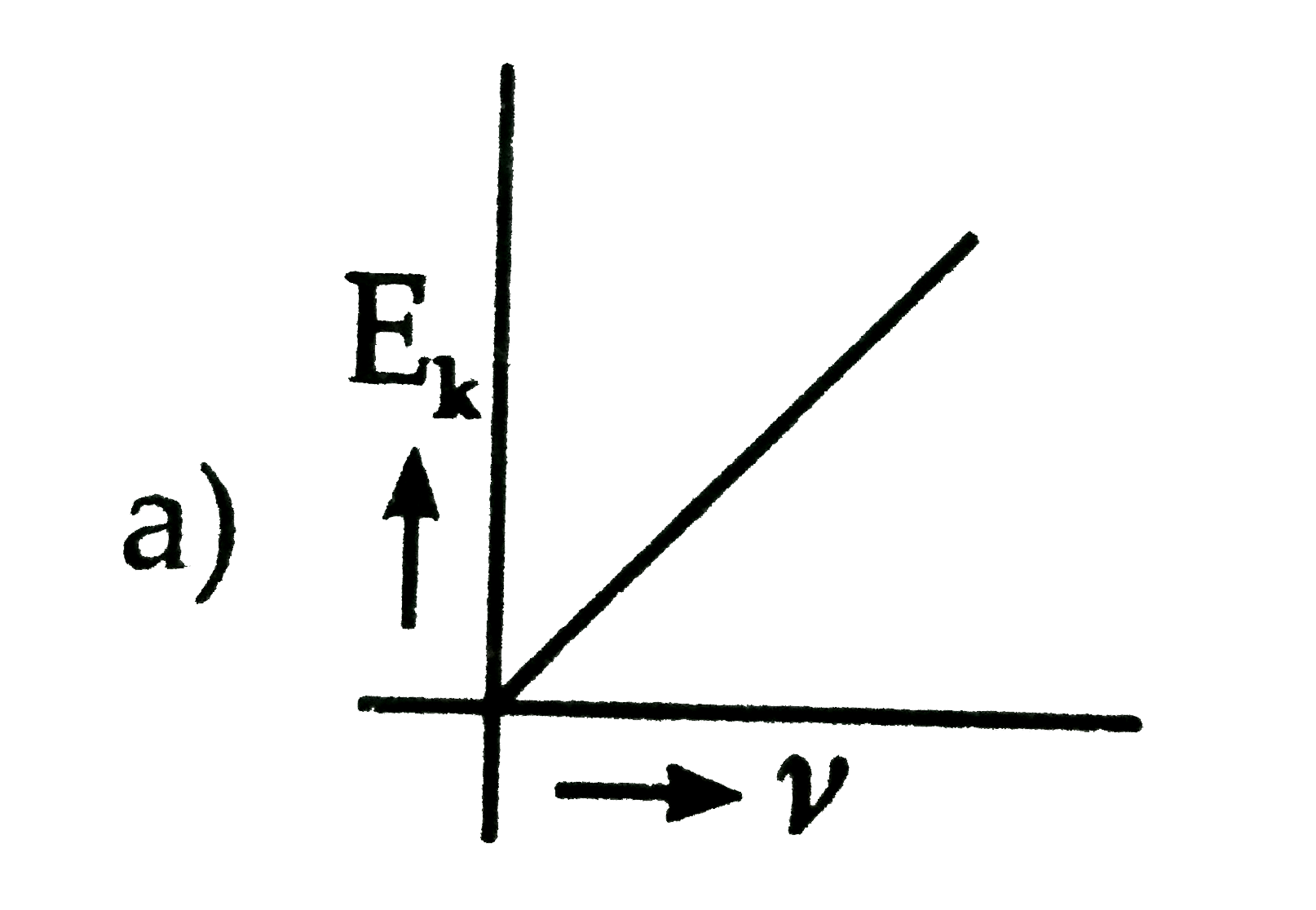 B
B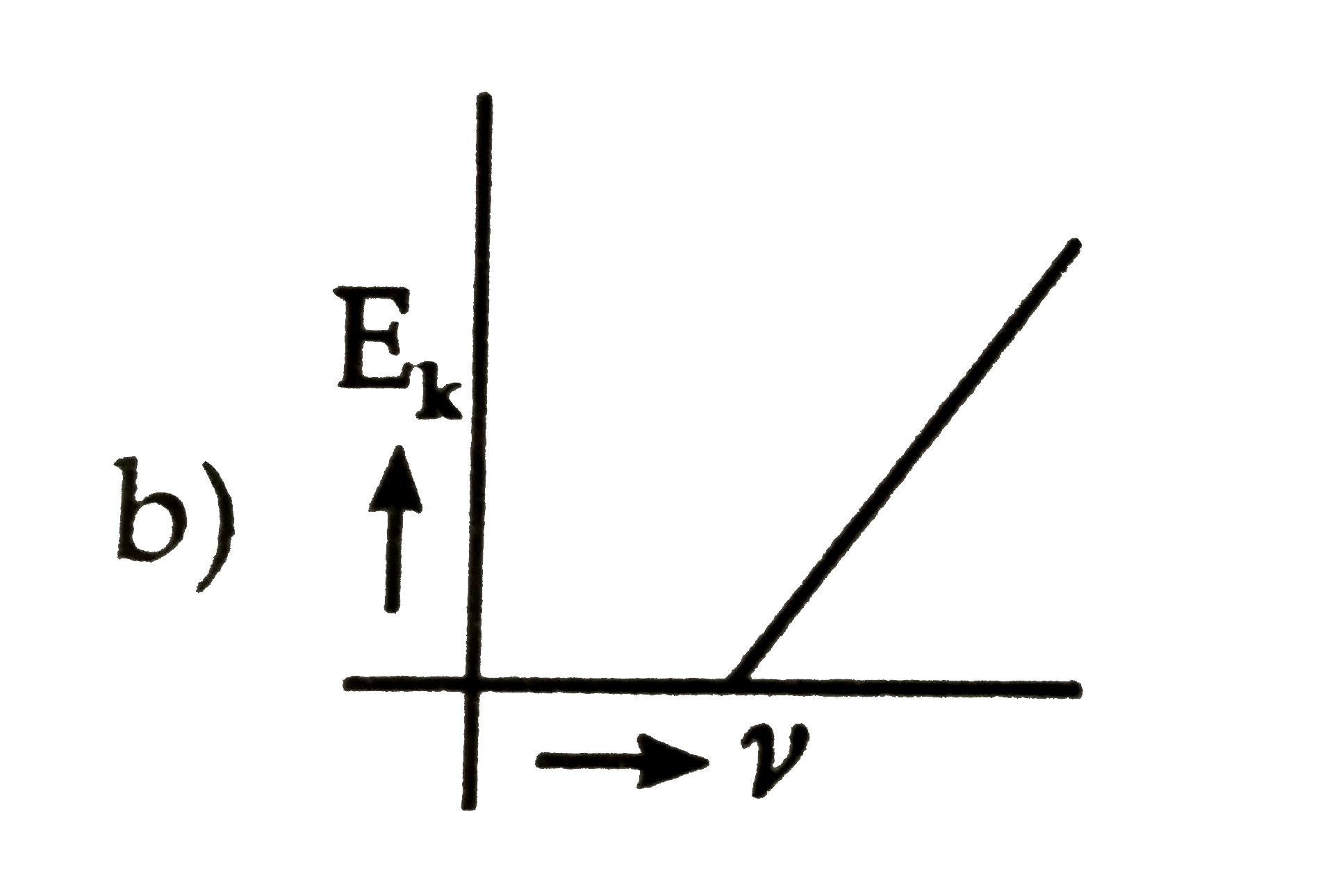 C
C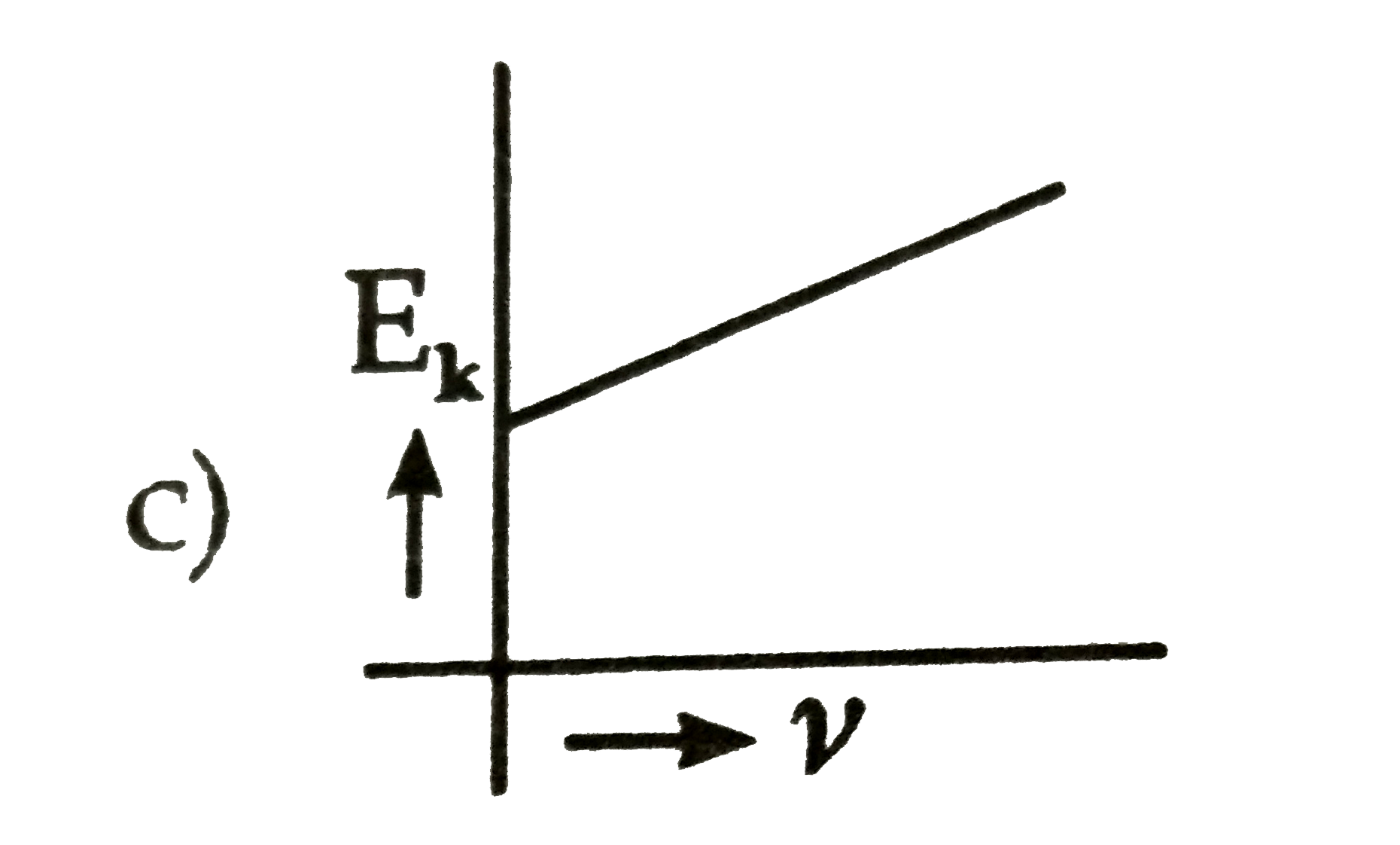 D
D
- Question 2 - Select One
According to Einstein's photoelectric equation, the graph between the kinetic energy of photoelectrons ejected and the frequency of incident radiation is
A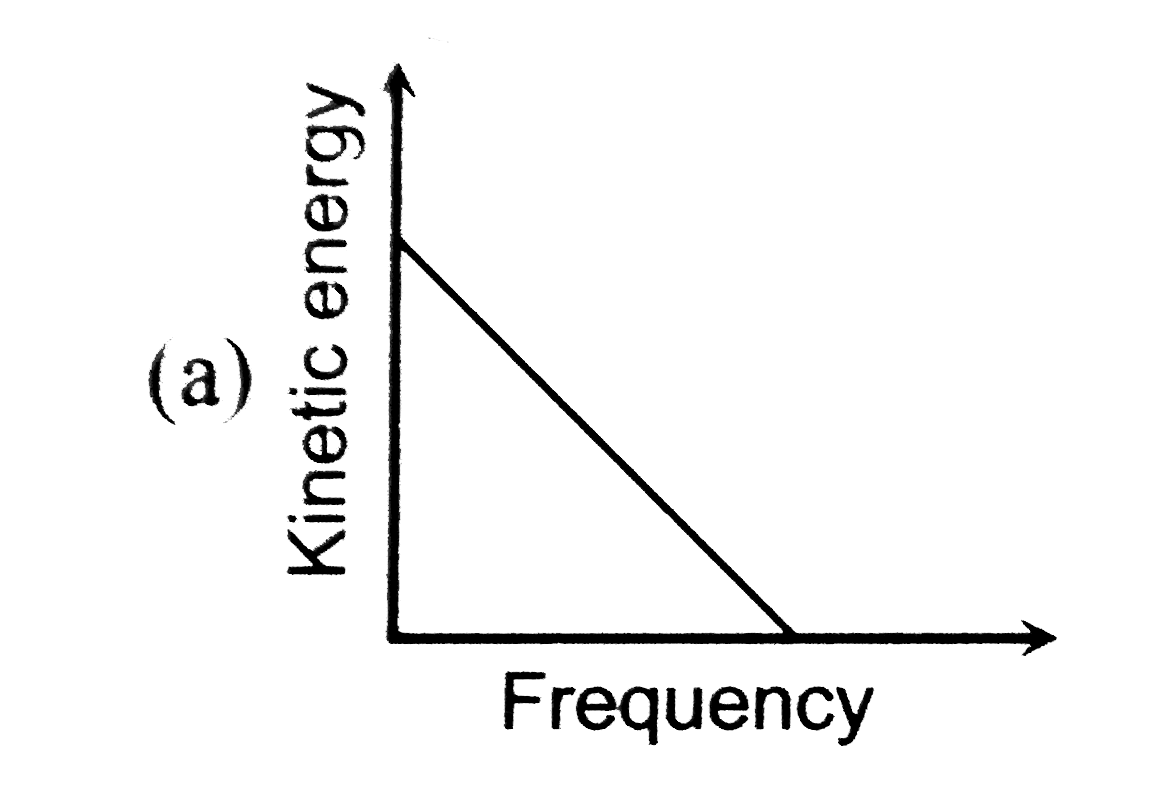 B
B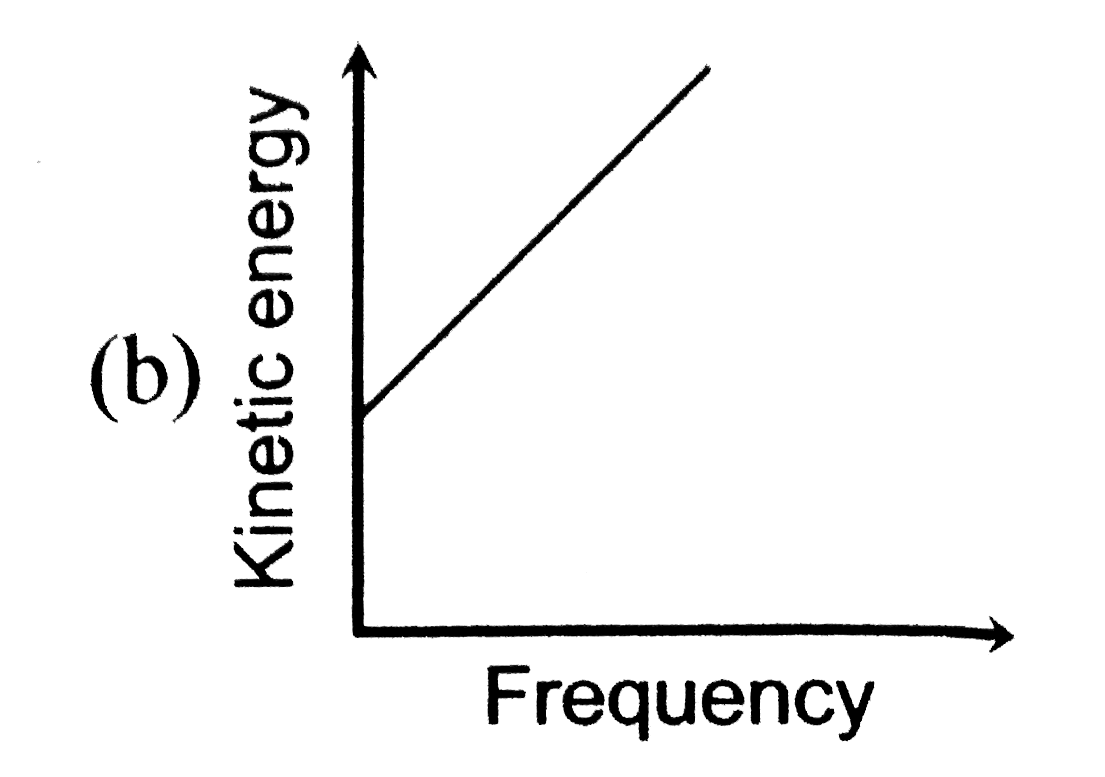 C
C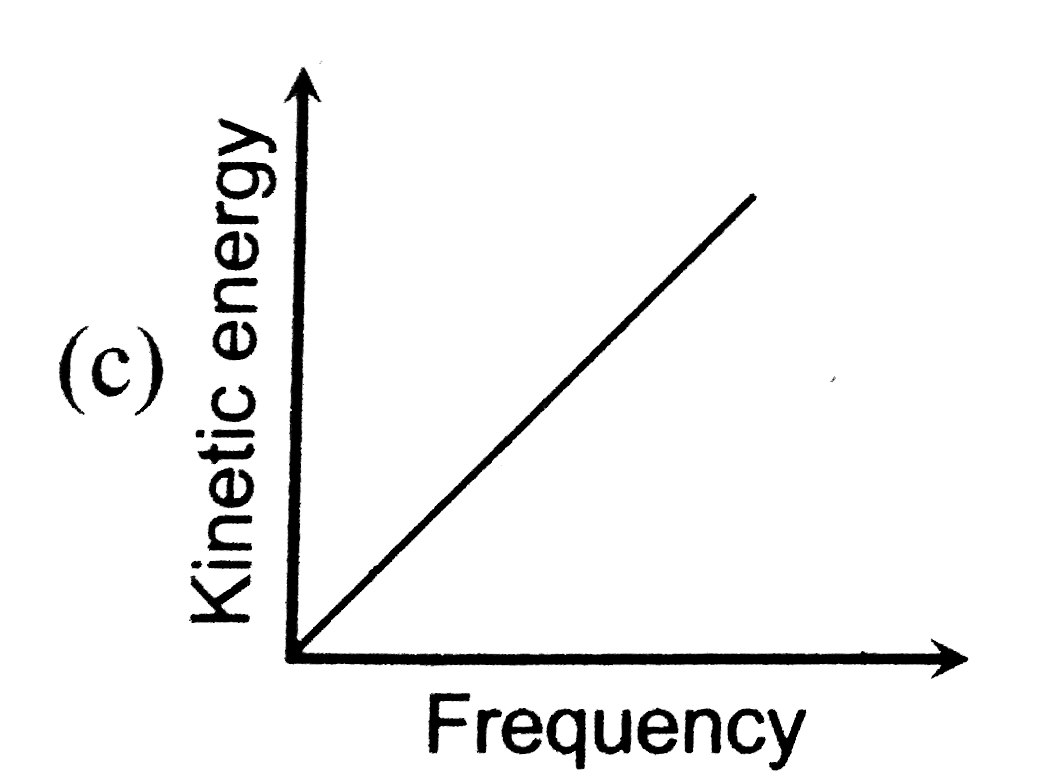 D
D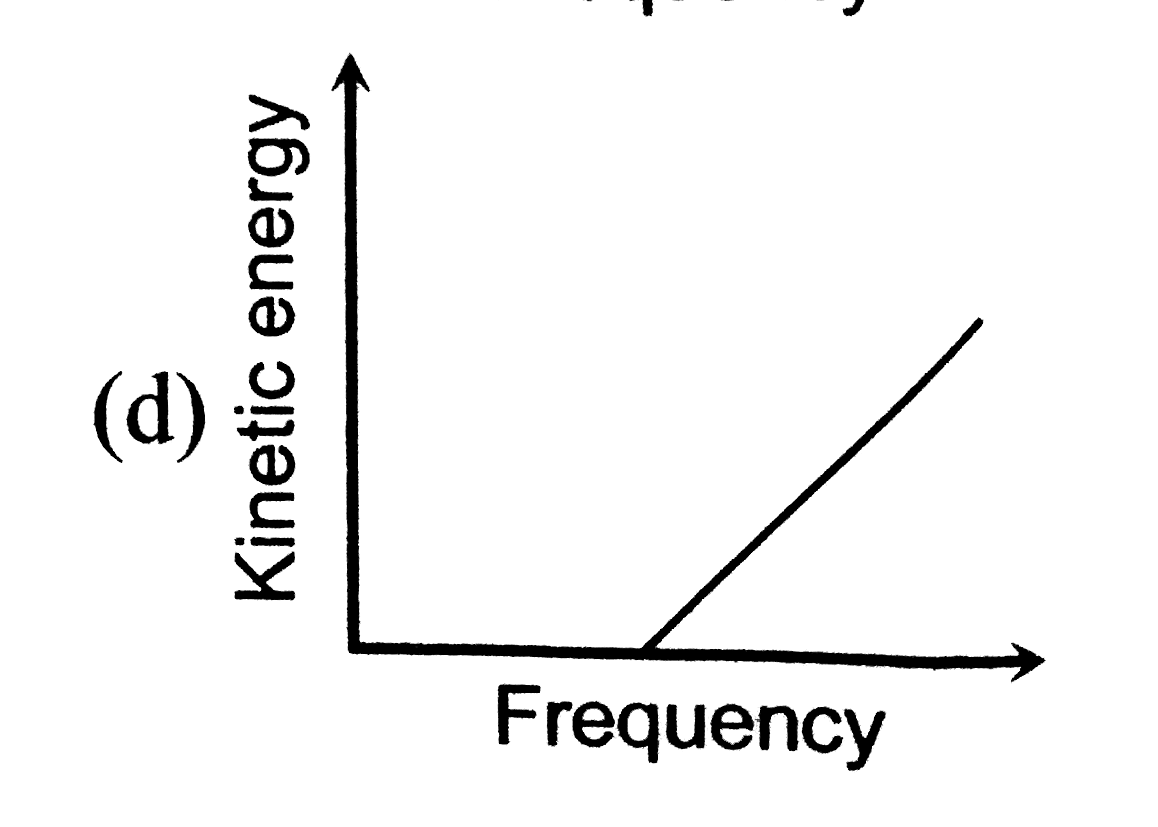
- Question 3 - Select One
The kinetic energy (Ek) of a photoelectron varies with the frequency (v) of the incident radiation as which of the following graph ?
A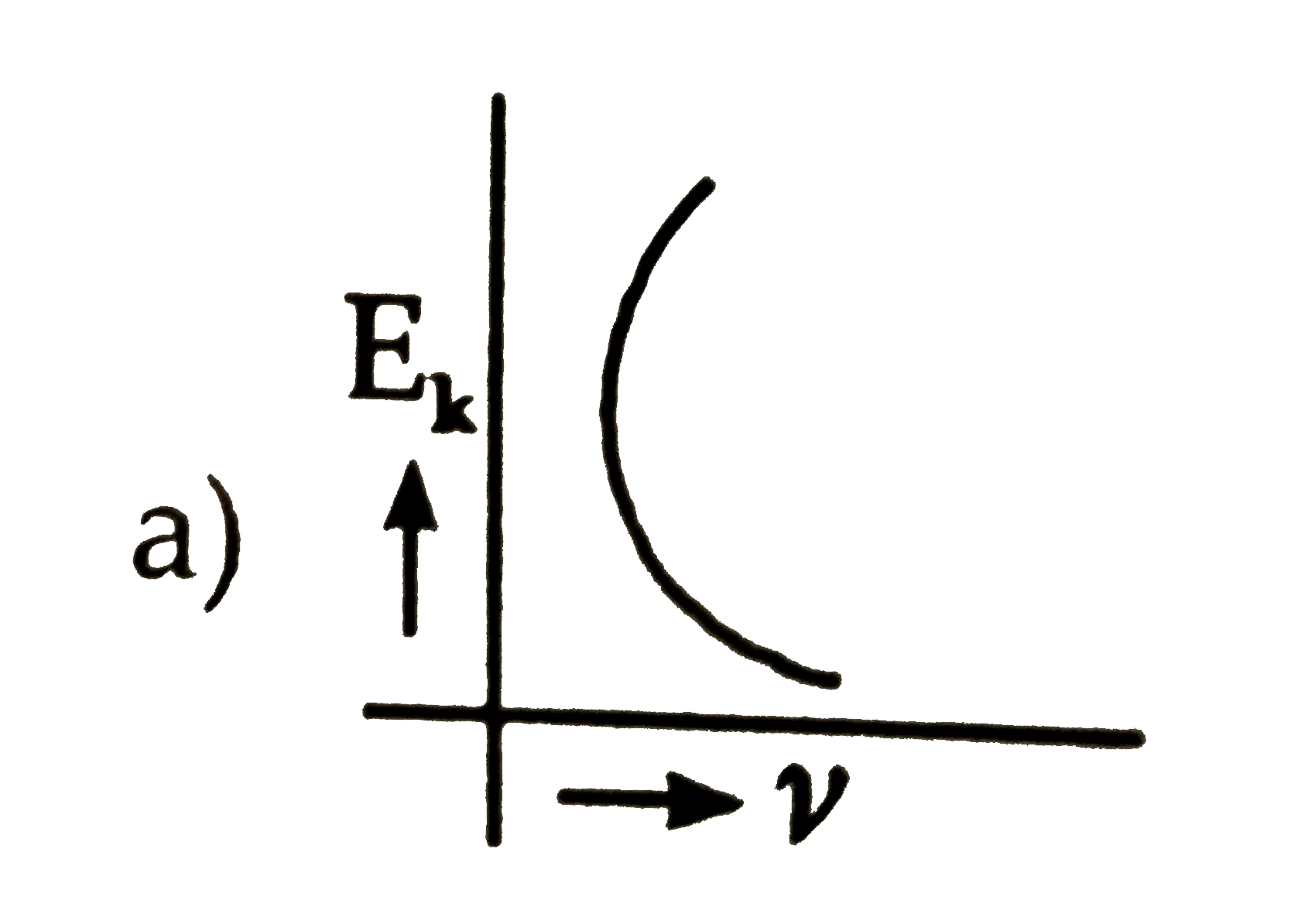 B
B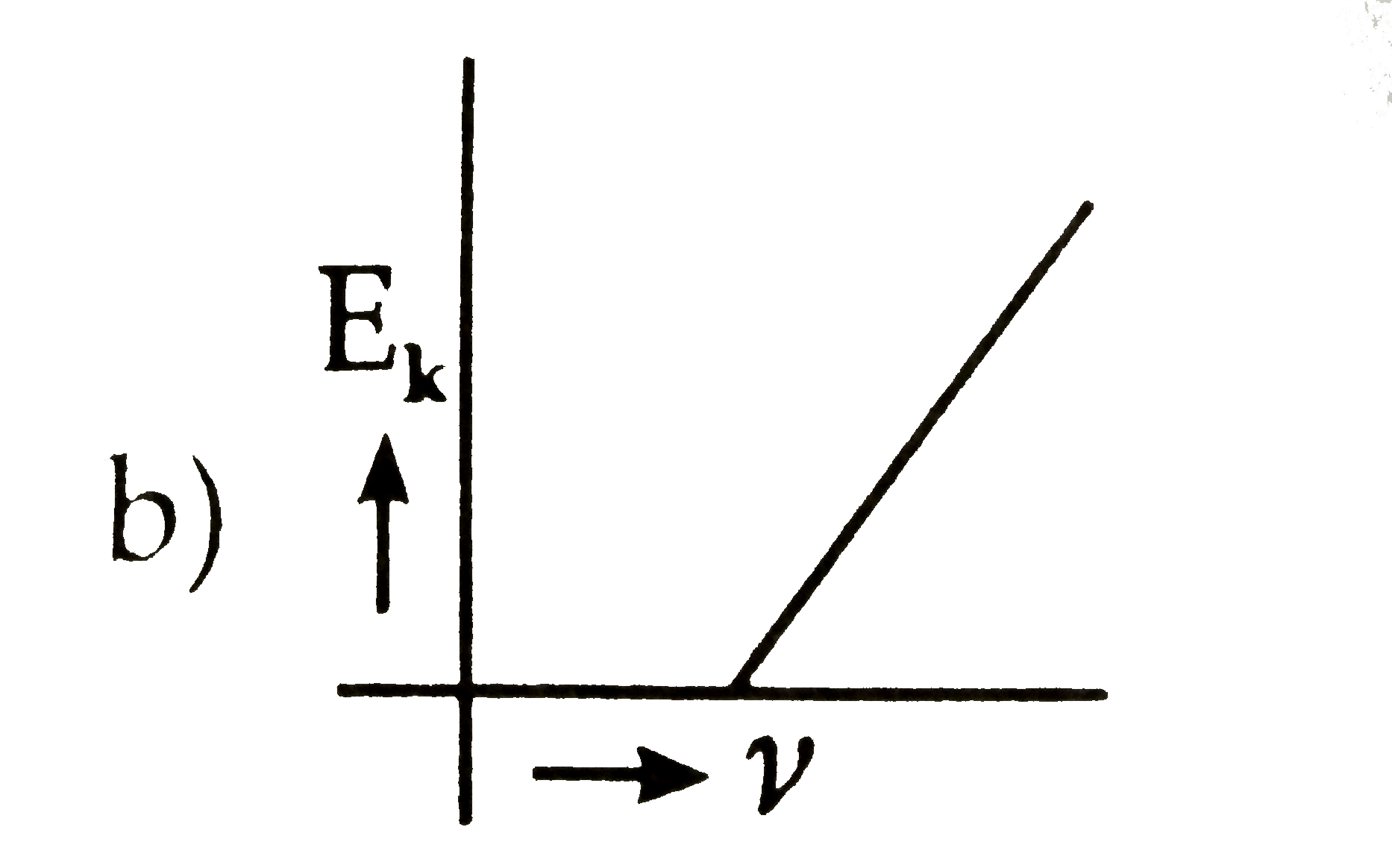 C
C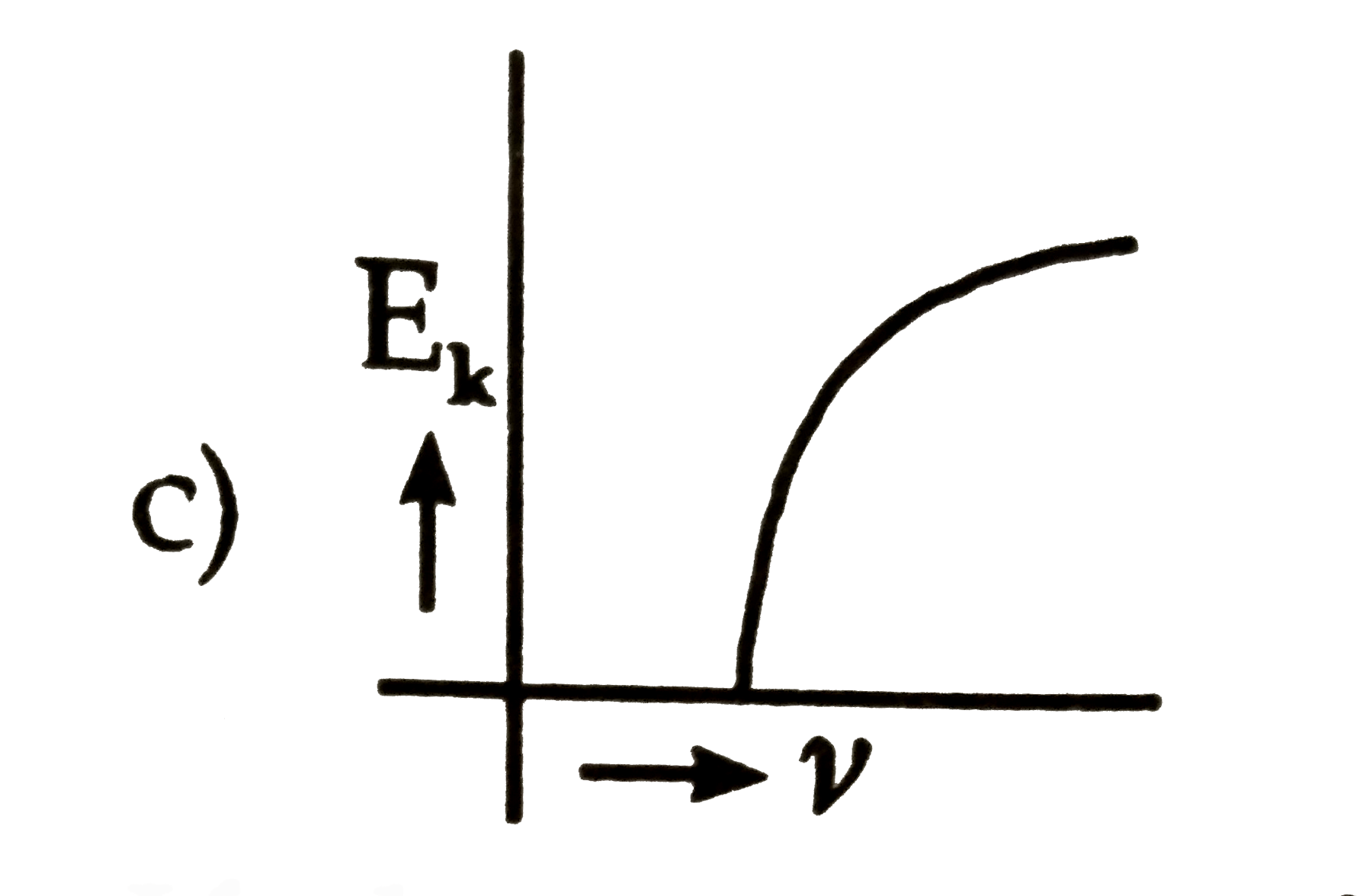 D
D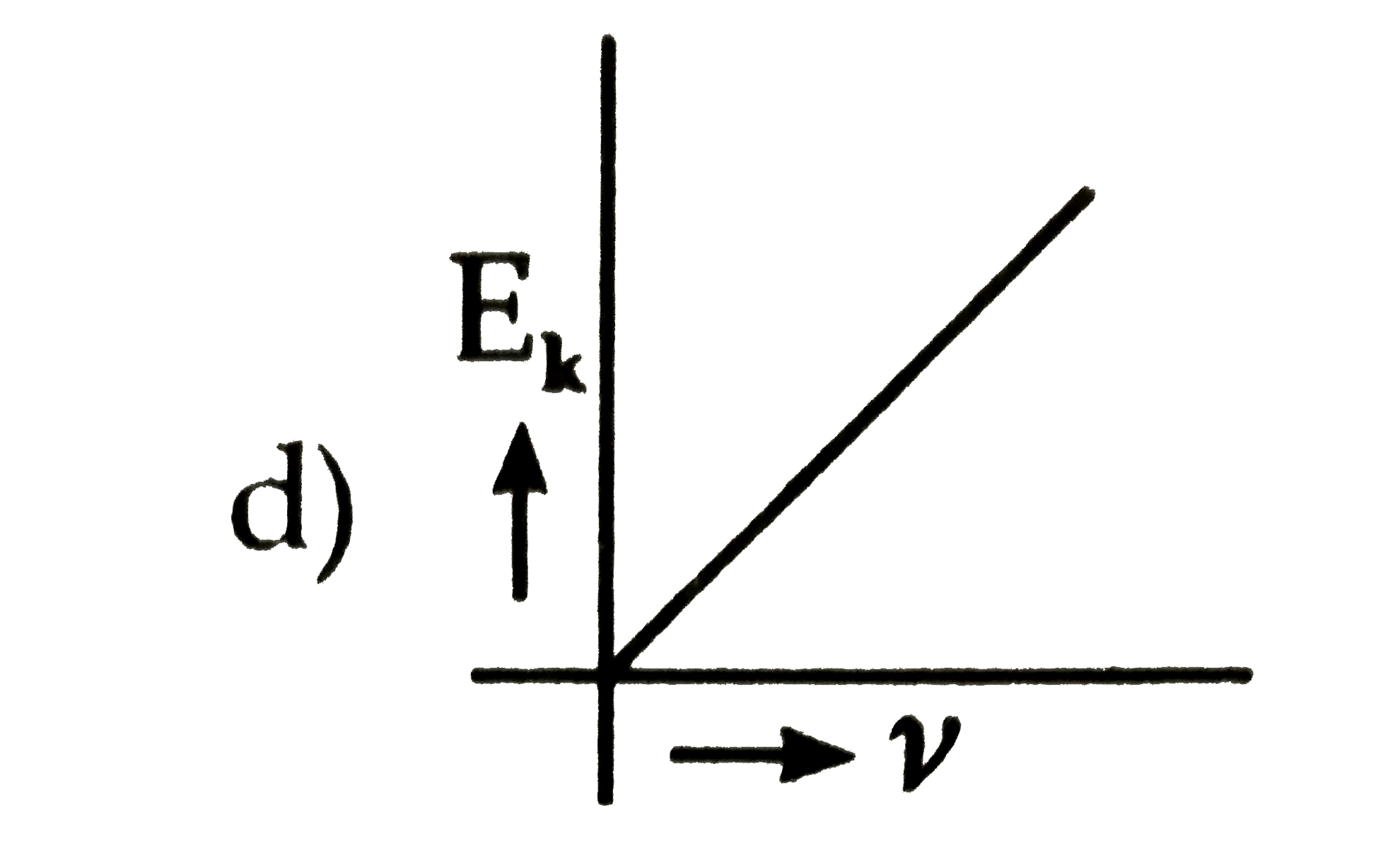
How does the photoelectric current vary with the intensity of incident radiation?
View SolutionDoes the kinetic energy of photoelectrons depend on the intensity of incident radiations?
View SolutionIn a photoelectric experiment, kinetic energy of photoelectrons was plotted against the frequency of incident radition (v), as show in figure. Which of the following statements is correct ?
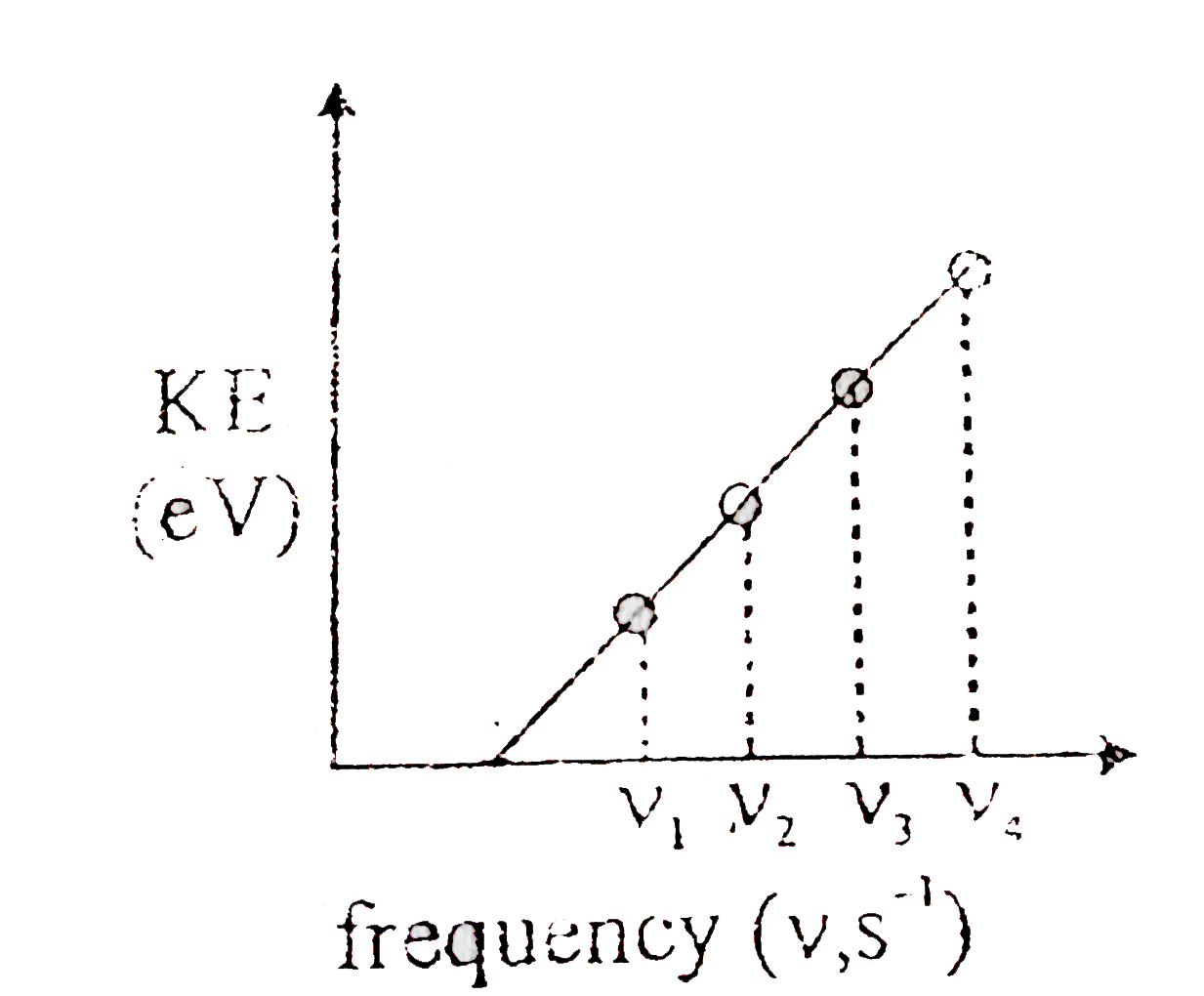 View Solution
View SolutionFor the photoelectric effect, the maximum kinetic energy Ek of the emitted photoelectrons is plotted against the frequency ν of the incident photons as shown in the figure. The slope of the curve gives
 View Solution
View SolutionAccording to Einstein's photoelectric equation, the plot of the maximum kinetic energy of the emitted photoelectrons from a metal versus frequency of the incident radiation gives a straight line whose slope
View Solution
